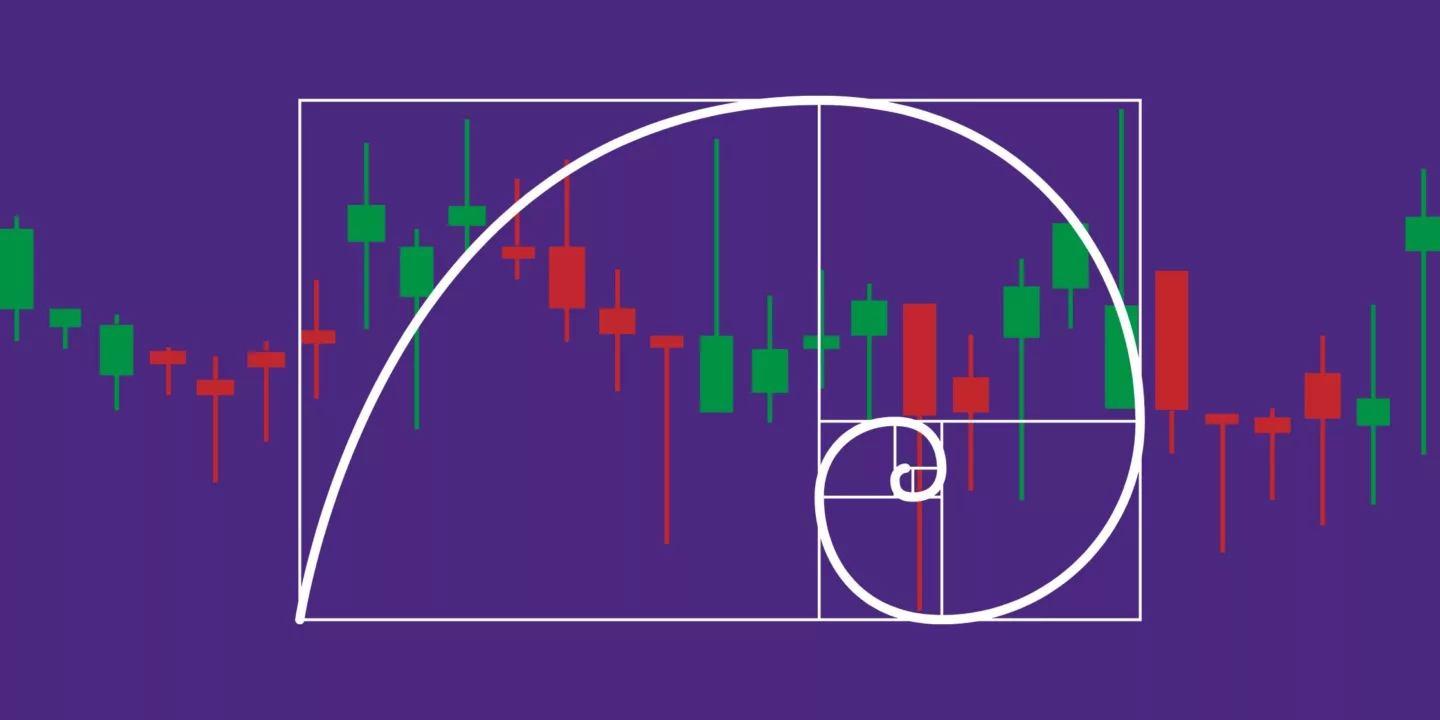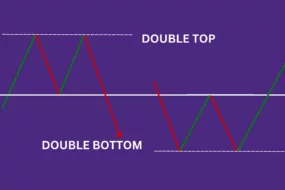
Fibonacci Retracement Level in Crypto Trading: What it is and How to Use It?
Understanding support and resistance zones is crucial for success is difficult in the volatile world of cryptocurrency trading. Many traders struggle to accurately draw these zones using price action alone. A powerful alternative is the Fibonacci Retracement technique, rooted in mathematical principles. This guide will explore how Fibonacci Retracements can help you identify key support and resistance levels, enabling informed trading decisions.
Key Takeaways:
- Basic principles of drawing Fibonacci levels
- Use Cases for Fibonacci Retracement levels
- Benefits of Fibonacci Retracement levels
- Tips for Using Fibonacci levels
What are Fibonacci Retracement Levels?
Fibonacci retracement levels are horizontal lines on a price chart that indicate potential support or resistance areas based on the Fibonacci sequence. Named after Italian mathematician Leonardo Fibonacci, these levels were introduced to Western Europe by him, although the sequence originated from Indian merchants. Scholars suggest these concepts may have been formulated in ancient India between 700 BCE and 100 AD.
These levels, which include 23.6%, 38.2%, 50%, 61.8%, and 78.6%, represent the percentage of a price retracement from a prior peak. For instance, if a stock rises $10 and drops $2.36, it has retraced 23.6%.
How to Plot Fibonacci Levels
To consistently plot a Fibonacci retracement, follow these essential steps:
Step 1: Identify the Market Condition
Determine whether the market is in an uptrend or downtrend. This step is crucial, as the purpose of Fibonacci retracement is to assess how deep a pullback may occur within the existing trend. A practical way to define market conditions is by using the 200-period moving average.
Step 2: Identify Relevant Swing Highs and Lows
Focus on the current price action to identify the significant swing highs and lows. This will help you determine the relevant “leg” of the trend for your analysis.
Step 3: Plot the Fibonacci Retracement
Based on the identified market condition, draw the Fibonacci retracement levels correctly. In an uptrend, plot the retracement from the swing low to the swing high. Conversely, in a downtrend, plot it from the swing high to the swing low. This ensures that you accurately measure potential pullback levels before a possible reversal.
Use Cases of in Fibonacci Retracement Crypto Trading
Fibonacci retracement levels are widely utilized in crypto trading to identify potential support and resistance zones, enabling traders to make informed entry and exit decisions. These levels are particularly valuable during volatile market conditions, which are common in the cryptocurrency space. Here are some of the uses of Fibonacci retracement.
Identifying Support and Resistance
Fibonacci retracement levels help traders pinpoint potential areas where the price may find support or resistance during a pullback. The most commonly used levels are 23.6%, 38.2%, 50%, 61.8%, and 78.6%. For example, if Bitcoin rises from $30,000 to $40,000, a retracement to the 38.2% level would occur at approximately $36,180. Traders often monitor these levels closely, as they can indicate where buying or selling pressure may increase, leading to potential reversals.
Entry and Exit Points
Traders frequently use Fibonacci levels to determine optimal entry and exit points. For instance, during an uptrend, a trader might look to buy when the price retraces to the 38.2% or 61.8% levels, anticipating a bounce back. Conversely, in a downtrend, traders may look to sell or short when the price retraces to these levels. Historical data shows that many cryptocurrencies exhibit price behavior that aligns with Fibonacci levels, making them a popular tool for technical analysis.
Stop-Loss Orders
Fibonacci levels can also guide traders in setting stop-loss orders. By placing stop-loss orders just below key Fibonacci levels, traders can protect their capital in case the price continues to decline instead of bouncing back. For example, if a trader buys at the 61.8% retracement level, they might set a stop-loss just below the 78.6% level to minimize potential losses. This strategy helps traders maintain discipline and manage risk effectively.
Risk Management
Utilizing Fibonacci retracement levels allows traders to manage risk more effectively. By understanding where potential reversals may occur, traders can make more informed decisions about their positions. For instance, if a trader identifies a strong support level at 38.2%, they may choose to increase their position size, knowing that the risk of a significant drop is lower. This approach can enhance overall trading performance and reduce emotional decision-making.
Market Psychology
The popularity of Fibonacci retracement levels among traders can create self-fulfilling prophecies. Many traders watch the same levels, leading to increased buying or selling activity at these points. This phenomenon can amplify price movements as traders react to the same technical signals. For example, if a large number of traders place buy orders at the 61.8% retracement level, the resulting buying pressure can lead to a price bounce, reinforcing the validity of the Fibonacci levels.
Benefits and Limitations of Fibonacci Retracement
Benefits
- Pivot points can effectively identify potential price reversal moments and confirm trend direction changes when set correctly. They are applicable across various assets, markets, and timeframes. However, it’s important to note that higher timeframes generally yield more accurate signals. While Fibonacci levels are popular among scalpers using short timeframes like M1 and M5, the inherent price noise in these intervals can lead to inaccuracies.
- Fibonacci levels are unique in that they combine mathematical algorithms with market psychology, unlike many technical indicators that rely solely on historical data patterns.
- Fibonacci levels account for the collective behavior of traders. This psychological aspect can enhance the effectiveness of a Fibonacci trading system, as it reflects the levels where many traders are likely to react, thereby influencing price movements.
Limitations
- Determining the starting point for a trend can be challenging, as trends are rarely perfectly flat. Even when a trend begins to emerge from a consolidation phase, pinpointing the exact starting point can be difficult, leading to potential inaccuracies in analysis.
- Fibonacci levels can generate false signals, which are often more accurately described as misleading rather than entirely false. The price may reverse without reaching a designated Fibonacci level or may break through it only to reverse within the surrounding zone. This variability can complicate trading decisions.
- Fibonacci retracement levels cannot be effectively integrated into Expert Advisors (EAs) due to the complexity of automatically calculating and adjusting grid levels. As a result, this tool is not suitable for use in algorithmic trading strategies, limiting its application for automated trading systems.
Tips for Effective Use of Fibonacci Retracement
Fibonacci retracements are essential tools in technical analysis for traders. Here’s a detailed guide on how to effectively utilize Fibonacci Retracements in trading.
1. Trend Identification
The first step in using Fibonacci Retracements is to identify the current market trend. Traders need to assess whether the asset is experiencing an uptrend or a downtrend. In an uptrend, the retracement should be drawn from the most recent low to the high, while in a downtrend, it should be drawn from the recent high to the low. This initial setup is crucial for establishing the relevant retracement levels for further analysis.
2. Drawing Fibonacci Levels
Traders can leverage the Fibonacci Retracement tool available on their trading platforms to accurately plot levels on their charts. By selecting the significant high and low points of a recent price movement, the tool automatically generates key Fibonacci ratios, including 23.6%, 38.2%, 50%, 61.8%, and 100%. These ratios act as potential support and resistance levels, providing valuable insights into price behavior.
3. Analyzing Price Action
After plotting the Fibonacci levels, the next step is to monitor the price action as it approaches these key levels. Traders should use additional technical analysis tools—such as indicators, candlestick patterns, and volume analysis—to confirm trading signals. This multi-faceted approach helps validate potential reversals or continuations at the Fibonacci levels, enhancing the reliability of trading decisions.
4. Setting Entry and Exit Points
Fibonacci Retracement levels can be instrumental in determining precise entry and exit points for trades. For instance, in an uptrend, traders might consider entering a long position if the price retraces to the 38.2% or 50% level and exhibits signs of a rebound. After assessing the strength of the trend, traders can set profit targets at higher Fibonacci levels, such as 61.8% or 100%, to maximize their gains.
5. Managing Risks
Fibonacci Retracements also play a vital role in refining risk management strategies. Traders can place stop-loss orders just beyond significant Fibonacci levels to mitigate potential losses. For example, if entering a trade at the 50% retracement level, a stop-loss could be set below the 61.8% level. This approach helps safeguard capital while allowing traders the flexibility to adjust their positions as needed.
ALSO READ: Spot Market Sentiment Analysis: Top Tools & Tips for Crypto Traders
Conclusion
Mastering Fibonacci retracement levels can significantly enhance your trading strategy by helping to identify key support and resistance zones. By leveraging these levels effectively, you can improve your entry and exit points, manage risk, and make informed decisions in the volatile world of cryptocurrency. Ready to take your trading to the next level? Download the Mudrex app today and start utilizing powerful trading tools and insights to optimize your crypto investments!
FAQs
How to use Fibonacci retracement on crypto?
To use Fibonacci retracement in crypto, identify significant price swings, apply the Fibonacci tool to plot key levels, and analyze price action around these levels for potential support and resistance.
What is 0.618 in trading?
The 0.618 level in trading represents a key Fibonacci retracement level, often referred to as the golden ratio. It is significant because it frequently indicates potential reversal points in price movements, guiding traders in their strategies.
Why is 61.8 a golden ratio?
The 61.8% ratio, known as the golden ratio, is derived from the Fibonacci sequence. It appears in various natural phenomena and is believed to influence market behavior, making it a crucial level for traders to watch.
What are the best Fibonacci levels for crypto?
The best Fibonacci levels for crypto trading include 23.6%, 38.2%, 50%, 61.8%, and 100%. These levels serve as potential support and resistance zones, helping traders identify entry and exit points during price movements.
How to find entry and exit points in crypto?
To find entry and exit points in crypto, traders look for price action around key Fibonacci levels. They often enter long positions at retracement levels like 38.2% or 50% and set profit targets at higher levels, such as 61.8%.





